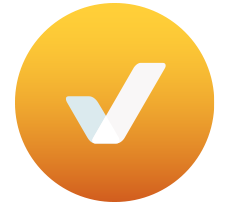Summer Update Part 3: Building a Modern Grid
In regulatory proceedings across the country, we have long made the case that consumer investment in solar and other clean energy options can be a real cost-saver as it reduces the need for expensive new and upgraded utility infrastructure. With solar on the rise, we’re seeing that promise turn into reality.

Take the case of our nation’s solar leader, California, where THIRTEEN costly transmission projects have now been cancelled, thanks in large part to energy efficiency and rooftop solar which reduce the need to move traditional power long distances. The total price tag on the cancelled projects was $192 million, a significant savings to California’s energy consumers. With strong energy policy and proper grid planning, we can make these kinds of savings — along with cleaner air and healthier communities — more commonplace for consumers all across the country.
The Golden State is going even farther to build a better energy system that’s powered by reliable renewable sources and empowers consumer participation like never before. Announced in June, PG&E’s plan to close the Diablo Canyon nuclear power plant — a facility that currently provides about 10 percent of California’s electricity — means that moving forward California’s electric grid can become more reliable with more decentralized and flexible sources of power rather than being dependent onbig traditional baseload power plants. Today it’s possible to envision a modern electric grid that makes smart use of the full suite of available energy technologies, including solar, storage, efficiency, demand response and other customer-centric resources. To that end, we’re deep in several regulatory proceedings in California, and we’ve hired industry vet Ed Smeloff to lead our regulatory team and expand our efforts to transform the electric grid to be cleaner, smarter and more durable.
The suite of clean technologies includes electric vehicles,which can be used to couple millions of batteries to create a grid powered by clean energy. Combining EVs and solar are like peanut butter and jelly — good on their own, and better together. When we electrify transportation and use renewables to provide that electricity, it’s like putting sunshine in the tank.
That’s why we strongly support the expansion of the market for EVs. Last year we launched a first-in-the-country group purchase program for both solar and EVs. The results? The program, offered in two counties in Colorado, increased EV sales by 4X per month, and in the last quarter of 2015, comprised 5% of national sales of Nissan Leafs. Not too shabby! Check out the case study (pdf) and handbook (pdf) on how to replicate this program on your own.
The power sector’s transformation is spreading throughout the country. As you might have heard, New York is undergoing a major initiative called Reforming the Energy Vision (REV). REV seeks to fundamentally remake the electric system in a way that puts customers and clean energy at its center. As you can probably guess, our role in REV proceedings is working to ensure that solar is accessible and affordable for all New Yorkers. Check back here to see what we’re up to in New York. (And if you happen to find yourself in New York this September, join us and a few hundred of our closest friends for Vote Solar’sannual fall fundraiser: Equinox East.)
Our mission is to make solar a mainstream energy resource and we’ll continue pulling (and pushing) solar, EVs and grid modernization towards center stage as the energy revolution unfolds across America.

